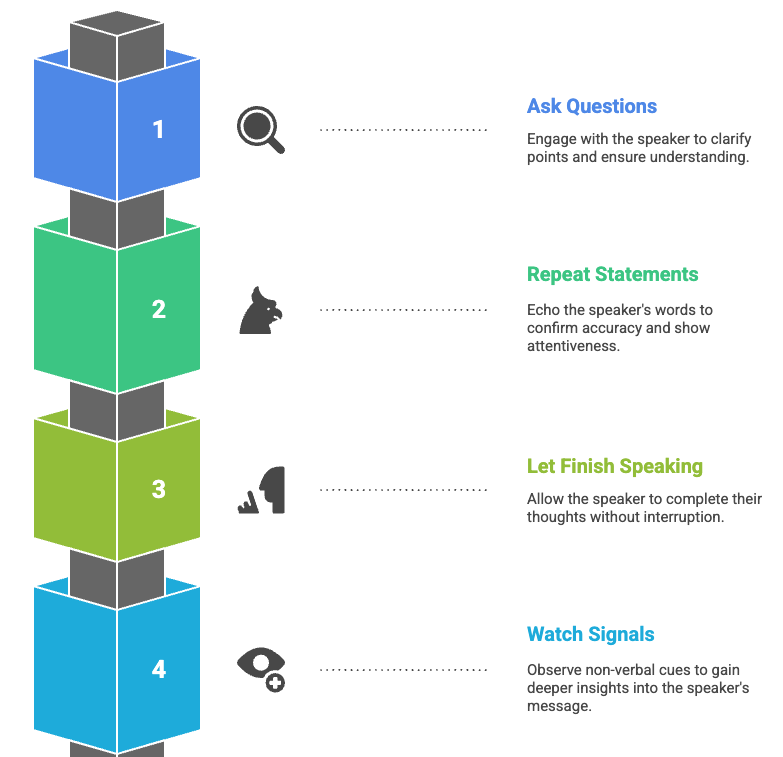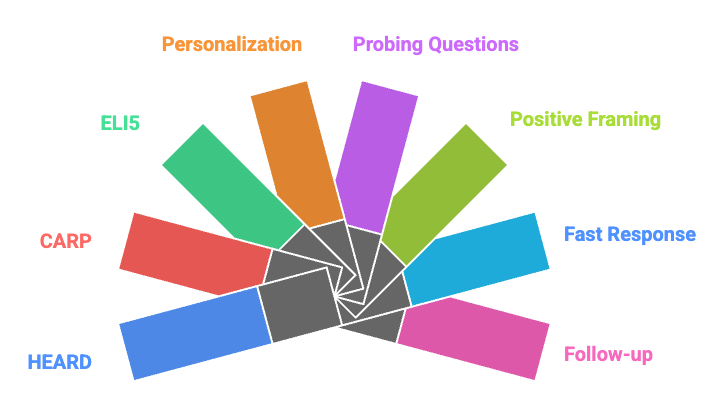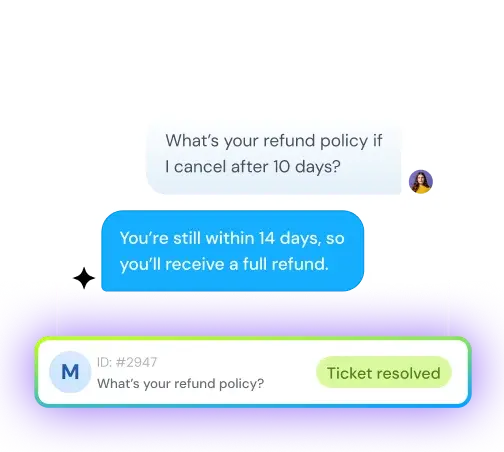Customer care techniques that actually work: A support manager's guide [2025]
Vaishali Jayaprakash
Aug 28, 2025

Poor customer care techniques can destroy your business, as many customers leave after a bad experience. Companies suffer losses exceeding $62 billion each year because of inadequate customer service management.
Companies that invest in better customer care see measurable returns. Customers who receive excellent service spend more money. This emphasizes customer service techniques' importance, regardless of your team's size or support department's scale.
Experts project the customer experience management industry to reach $52.53 billion by 2030, and with good reason too. A company's relationship with its customers matters significantly as customers want lasting brand connections. In this piece, you'll find practical, proven skills that work in ground situations for customer service representatives. Your approach to customer care can create loyal supporters instead of one-time buyers.
3 Core skills every support manager should build
Customer support teams thrive on three basic skills. Your team's performance and customer experience depend on how well you master these fundamentals as a support manager.
1. Empathy and emotional intelligence
Support managers who possess high emotional intelligence can spot, grasp, and handle their emotions while responding well to what others feel. This awareness helps create better bonds with customers and team members.
Empathy serves as a vital part in building customer relationships and defusing tense situations. You don't just fix problems when you show real understanding of customer frustrations—you make them feel understood. Research shows that nearly 50% of customers believe companies act with empathy during customer service interactions.
Support managers with emotional intelligence lead teams skillfully and keep them driven. Your team's work environment and output reflect your attitude toward them. Teaching your support staff to pick up on emotional signals during customer talks helps turn basic interactions into special experiences.
2. Clear and simple communication
Good communication means expressing ideas clearly and understanding other people's point of view. Support managers should excel at speaking and writing because they need to:
- Run meetings that keep everyone on the same page
- Solve complex problems quickly
- Share company policies with teams and customers
- Work with different departments to create efficient processes
Simple language works best when talking or writing to customers. This approach builds trust and connection. Great customer support staff can explain difficult concepts simply without leaving customers puzzled.
Your communication skills play a key role in creating good customer experiences and training your team. Your team learns to explain complex ideas simply to customers when you show them how it's done.
3. Patience and active listening
Active listening creates the base for good communication. The practice goes beyond just hearing words - it means focusing fully on customer messages, getting their meaning, and answering in ways that show you understand.
Patient support managers don't rush to close tickets. They take time to step back, reflect, and act in customers' best interests. They know that careful listening often reveals useful insights that can improve services and make processes smoother.
Active listening requires several steps:

These methods show responsibility and make customers feel important. Data shows that 77% of consumers will choose to buy from brands that provide personalized customer service. This level of personal attention only happens when you truly listen to understand their needs.
These three core skills help you handle tough customer situations better and create a team culture that values genuine customer care.
What is a customer care technique?
A customer care technique is a structured approach, method, or practice that support teams use to improve customer interactions and build stronger relationships. In simple terms, it’s a practical way of handling customer conversations, resolving issues, and showing care, so customers feel valued and supported.
8 proven techniques for caring for customers

Let's put these core skills into practice with techniques that create real improvements in customer satisfaction and loyalty.
1. HEARD: A structured empathy method
The HEARD technique helps you handle upset customers through five steps: Hear, Empathize, Apologize, Resolve, and Diagnose. Listen without interrupting, make eye contact, and nod to show you understand their concerns. Connect with them by saying things like "I understand why that would be frustrating." Give a genuine apology even if you didn't cause the problem. Look for solutions that work best for the customer rather than quick fixes. The final step asks you to analyze what caused the issue to stop it from happening again.
2. CARP: De-escalation made simple
The CARP method gives you a clear path when things get tense: Complain, Apologize, Resolve, and Prevent. Let customers tell you everything without cutting them off. Say sorry and mean it - don't make excuses about what went wrong. Work with them to find practical solutions that fix their specific problems. Then take steps to stop these issues from coming back, which shows you're serious about getting better.
3. ELI5: Simplify complex issues
ELI5 (Explain Like I'm 5) breaks down tough concepts into bite-sized pieces anyone can understand. Don't just tell someone to "take a screenshot" - walk them through each step: "Press these buttons, then look for a file on your desktop." This helps customers feel smart instead of lost, and builds trust while cutting down on confusion. The goal is to make things simple without talking down to anyone.
4. Personalization: Use names and history
76% of consumers think personalized communications matter when they choose brands. Using your customer's name and bringing up their past purchases makes recommendations more relevant. Mentioning previous conversations shows you see them as people, not just numbers. This creates stronger connections and makes customers more loyal.
5. Probing Questions: Clarify and confirm
Specific questions help when customer issues aren't clear. "When did this problem start?" or "What have you tried so far?" These questions help find the real problem and show customers you want to understand everything. Questions like "How has this affected your work?" show you care while getting important details.
6. Positive Framing: Focus on solutions
Positive framing puts the spotlight on what's possible instead of limitations. "Your order will be available Tuesday" works better than "We can't deliver until Tuesday." This small change keeps things upbeat even in tough situations. Talk about benefits and possibilities when giving options, which moves conversations toward good outcomes.
7. Fast Response: Respect their time
Quick responses make customers happy. Acknowledge messages right away, even if you need more time to fix things. Solving problems completely the first time matters just as much - try to handle everything in one go whenever you can.
8. Follow-up: Show you care after resolution
A quick check-in after fixing a problem shows exceptional service and keeps customers from leaving. Send a simple email or make a call to show you value the relationship. Follow-ups let you get feedback, spot any lingering issues, and turn service calls into stronger connections. This helps catch problems early and shows customers you're committed to their happiness.
Training your team to use these techniques
Customer care techniques work best with smart training strategies. Your support team needs practical skills that go beyond theory. Let me share some proven methods that give your team the skills they need.
Role-playing real scenarios
Role-playing turns abstract concepts into real skills through simulated customer interactions. Your team builds confidence for actual situations this way. They find better solutions, make fewer mistakes in real interactions, and develop stronger communication skills.
Here's how to run effective role-playing sessions:
- Start by gathering participants and explain the specific challenge they'll practice
- Give detailed background information that makes the scenario feel real
- Hand out specific roles (customer and representative) with clear context for each character
- Let trainees perform while peers watch, and gradually make situations more complex
- Talk about the experience afterward and analyze what worked and didn't
Online dialog simulations that mirror real customer interactions help too. Team members can practice safely and see how different response choices play out.
Using call recordings for feedback
Call recordings serve as powerful examples that turn theoretical training into practical learning. Recordings show actual business situations that strike a chord with agents better than generic presentations or scripts.
Here's how to make it work:
- Play successful and unsuccessful recorded calls during training
- Let agents hear their own calls to coach themselves
- Give targeted, individual-specific feedback using recordings
- Show how to handle common customer questions and scenarios
This method connects training to ground application naturally. Supervisors can watch new agents in real-time and fix problems right away. This hands-on, timely training builds professional customer service.
Creating technique-specific playbooks
Technique-specific playbooks help your team use customer care methods the same way every time. These well-laid-out guides show agents exactly how to solve specific types of cases.
Good playbooks should have:
- Complete product knowledge with steps for common questions
- Communication techniques for different scenarios
- Technical troubleshooting steps
- Clear company policies and when to escalate
Playbooks make sure employees know their next steps in every situation. They work as practical reference tools that strengthen training and guide agents through tough interactions.
These three training approaches together turn customer care theory into skills your team uses confidently every day. This all-encompassing training strategy leads to better agent performance and happier customers.
Using technology to scale customer care
Technology gives us powerful ways to scale customer care beyond what teams can do on their own. AI-powered tools help support managers expand their teams' reach while maintaining high-quality customer interactions.
AI tools for up-to-the-minute coaching
AI coaching reshapes how support representatives handle customer conversations. These tools guide agents through interactions and help them respond better and more consistently. The results are a big deal as it means that companies using mature AI systems show 15% higher human agent satisfaction scores.
AI coaching brings value to everything in customer care:
- Performance improvement: AI-powered systems can boost higher productivity.
- Immediate guidance: AI tools suggest responses, summarize past interactions and flag follow-ups during live conversations.
- Reduced administrative work: AI automatically generates call summaries, drafts follow-up emails and updates CRM records. This saves valuable time for support teams.
AI coaching helps agents deliver better customer care by analyzing sentiment and giving context-aware suggestions during interactions. These tools give supervisors valuable data by automatically scoring calls and spotting coaching opportunities.
Chatbots for 24/7 support
Modern AI-powered chatbots have grown beyond simple FAQ responders into sophisticated AI agents that handle complex customer questions. These systems give immediate support whatever the time zones, holidays, or staff availability.
Chatbots bring several advantages to your customer care strategy:
Cost efficiency: Chatbots handle high volumes of routine questions without extra staff. One salon chain saved $14,000 monthly by automating 66% of customer queries with AI agents.
Faster resolution: AI systems cut resolution times dramatically—from 11 minutes to less than 2 minutes in one case study.
Tailored assistance: Today's chatbots link to backend systems to access customer history and deliver personalized help based on previous interactions.
The best implementation creates smooth handoffs between chatbots and human agents. Customer context moves to human representatives when conversations go beyond a chatbot's abilities. This eliminates the frustration of customers having to repeat themselves.
All the same, note that technology works best supporting human expertise rather than replacing it. As one expert notes, "The future of customer service isn't AI or humans—it's AI and humans, working side by side to deliver personalized, seamless, and empathetic experiences".
Tracking success and making improvements
Your customer care techniques need solid evidence to show what works and what doesn't. A proper tracking system helps you make decisions based on analytical insights rather than guesswork.
Set KPIs for each technique
Each customer service technique needs specific metrics to measure success and support ongoing training investments. Your objectives should be clear before you establish KPIs. To cite an instance, see how HEARD method implementation affects customer satisfaction scores in escalated cases.
Effective customer service KPIs should be:
- Relevant to key customer service activities
- Quantifiable with numerical values
- Quick to calculate and communicate
Agent-specific metrics like Average Handle Time and broader experience indicators such as Net Promoter Score will give a complete view of performance.
Use surveys to gather customer insights
Surveys are a great way to get feedback about service strengths and areas needing improvement. The right timing makes a difference. Customers should receive surveys right after interactions while their experiences remain fresh. Short surveys, particularly one-question formats, take minimal effort yet yield valuable overview data.
Customer complaints might be tough to hear, but they reveal opportunities to spot recurring problems and enhance service delivery. Both transaction-specific surveys and broader relationship assessments help capture the customer's complete experience.
Reward agents who apply techniques well
Recognition affects performance significantly. Companies with employee recognition programs see higher employee engagement, productivity, and performance. On top of that, a 15% boost in engagement can lift profit margins by 2%.
A clear reward system needs well-documented policies that spell out recognition-worthy behaviors. This gives staff clear standards to measure their work, which leads to better customer satisfaction and revenue results.
The reward program should line up with specific company goals and customer service KPIs like CSAT, FCR, or NPS. This approach ensures recognition promotes behaviors that support your key priorities.
Key takeaways
Customer care excellence determines business success or failure. This piece shows how specific techniques can change routine support interactions into opportunities that build loyalty. These proven methods—from HEARD's structured empathy to ELI5's power of simplification—give your team practical tools they need for daily customer challenges.
Note that exceptional customer care starts with basic skills. Your team's empathy, clear communication, and active listening create meaningful customer connections. Time spent developing these core skills pays off through better customer retention and satisfaction.
Training links theory to practice. Your representatives can master these techniques through role-playing scenarios, call recording analysis, and complete playbooks. On top of that, technology acts as a force multiplier. AI coaching and chatbots expand your team's capabilities without losing the human element.
Measuring success completes your customer care strategy. Clear KPIs, customer feedback, and recognition of top performers build accountability and highlight areas to improve. This evidence-based strategy will give a clear picture of what works rather than what feels right.
Customer care techniques become powerful when they're part of your company's culture. Representatives who understand the why behind these approaches offer authentic support that appeals to customers. Your leadership in these strategies builds relationships from transactions and creates the loyal customer base businesses need to succeed.
Customer service excellence goes beyond fixing problems—it builds connections that turn one-time buyers into lifelong brand promoters.
Quick Summary: Customer Care Techniques That Actually Work [2025]
Customer care can make or break a business—poor service drives billions in losses, while great service builds loyalty and revenue. Support managers need three core skills: empathy & emotional intelligence, clear communication, and patience with active listening.
Eight proven techniques translate these skills into action: HEARD (structured empathy), CARP (de-escalation), ELI5 (simplification), personalization, probing questions, positive framing, fast response, and consistent follow-up.
Training methods like role-playing, call recording feedback, and technique-specific playbooks help agents apply these techniques effectively. Technology further scales care: AI coaching improves conversations in real time, while AI-powered chatbots provide 24/7 support with seamless human handoffs.
Finally, success depends on measuring impact with KPIs (like CSAT, NPS, FCR), gathering insights through surveys, and recognizing agents who apply techniques well. When embedded into culture, these strategies turn customer interactions into strong brand relationships, transforming one-time buyers into loyal advocates.
Frequently Asked Questions
A customer care technique is a structured approach, method, or practice that support teams use to improve customer interactions and build stronger relationships. In simple terms, it’s a practical way of handling customer conversations, resolving issues, and showing care, so customers feel valued and supported.
Customer care techniques include structured methods and practical skills that improve customer experiences. Common types are:
- HEARD – a 5-step empathy method (Hear, Empathize, Apologize, Resolve, Diagnose).
- CARP – a de-escalation technique (Complain, Apologize, Resolve, Prevent).
- ELI5 – simplifying complex issues so customers clearly understand.
- Personalization – using customer names, history, and preferences to build stronger connections.
- Probing Questions – clarifying details to uncover the real issue.
- Positive Framing – focusing on solutions rather than limitations.
- Fast Response – acknowledging and resolving queries quickly.
- Follow-Up – checking in after resolution to show ongoing care.\
These techniques, combined with empathy, communication, and active listening, help managers create loyal customers and stronger brand relationships.
Customer care techniques are essential because poor service drives billions in business losses each year, while excellent service builds loyalty and boosts revenue. When support teams use proven methods like empathy, clear communication, and personalization, they turn everyday interactions into opportunities for stronger customer relationships and long-term growth.
Support managers can train their teams through role-playing real scenarios, analyzing call recordings for feedback, and using technique-specific playbooks. These methods turn theory into practical skills, helping agents handle real situations with confidence. Technology like AI coaching and chatbots also enhances training by providing live guidance and scalable support.
